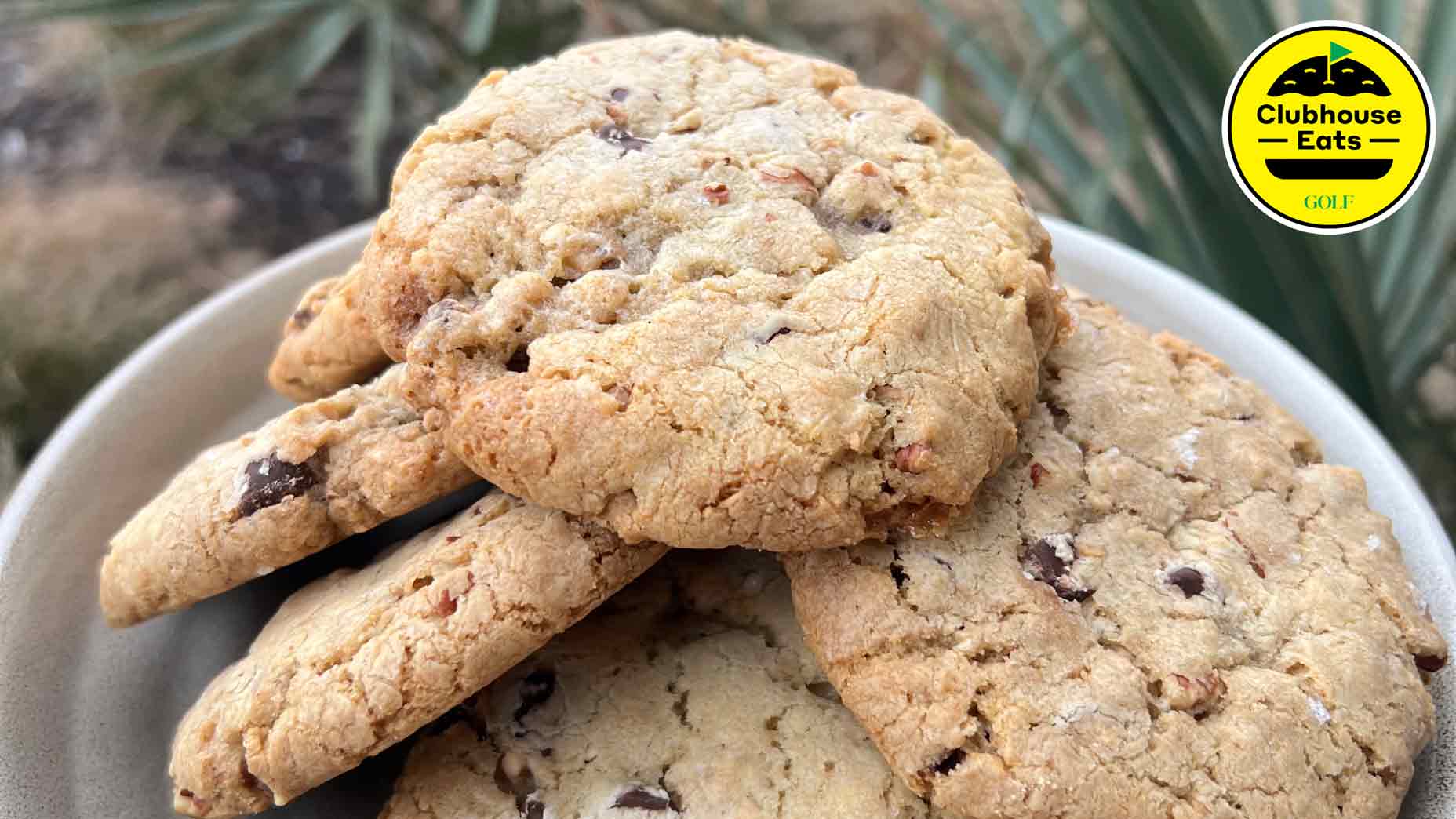Welcome to Clubhouse Eats, where we celebrate the game’s most delectable food and drink. Hope you brought your appetite.
***
While there’s never a bad time for a well-made gingersnap cookie, autumn just seems to call out a little louder for those savory, sweet, baking spice flavors. Coincidentally, the fall is when Florida’s Mountain Lake Golf Club reopens following a 26-week hiatus during late spring and summer, and the historic club — well known for its enviable Seth Raynor-designed course — is almost as famous for its gingersnaps. Seriously, the pro shop even sells golf belts embroidered with a whimsical woven likenesses of those cookies.
Naturally, I reached out to the club to learn any tricks of the trade when it comes to whipping up a batch these gingersnaps. Not surprisingly, the club wasn’t willing to share the specific recipe that it uses — I can’t blame them for that — but the club’s assistant general manager, Aaron Langley, did divulge some very important tips. He even shared the club’s secret ingredient — high-quality freshly grated ginger. He just didn’t specify how much of it to use.
So while I can’t give you a step-by-step guide to making the exact gingersnap cookies that Mountain Lake serves, I can offer the next best thing: expert guidance for making your own unique batch of gingersnaps — cookies that might become famous in their own right.
A Golden Ratio
Mountain Lake might be tight-lipped about its own recipe, but the club is happy to help amateur bakers assess the more readily available recipes that are out there. As Langley acknowledges, cookie recipes are all based on ratios, and for gingersnap cookies, the most critical ingredients measure out like this: 1 part butter, 1.5 parts sugar, 2.5 parts flour, and 1 part molasses (flavored and lifted using baking soda and ginger). Using that ratio, if a recipe looks significantly out of balance, Langley says it “might be a sign to steer clear.”
That said, he’s also quick to point out that there really isn’t one universal red flag when it comes to evaluating the presumed efficacy of a recipe. “Much of baking success comes down to how the recipe is executed,” he explains. “A good recipe in one person’s hands might fall flat in another’s if not followed with care.”
A Measured Approach
Even if you’re empowered with a trustworthy ratio for your ingredients, your baking efforts can go awry based on how you measure those components. “The U.S. system of using cups and teaspoons can lead to variations in results,” Langley acknowledges. “For consistent baking, measuring in grams is far more accurate and helps avoid over- or under-measuring critical ingredients.”
Molasses Makes the Difference
What makes this golf resort’s cookies so good? A surprising ingredient
By:
Shaun Tolson
“Generally, you want a dark, unsulphured molasses to give the snap, color, and warmth without making your cookie bitter,” says Langley, who likes Grandma’s Original unsulphured molasses, Brer Rabbit Full Flavor molasses and Golden Barrel unsulphured baking molasses. “But avoid Blackstrap [style molasses],” he adds, “unless you want a sharp, earthy flavor.” If you do, Langley cautions that you’ll need to add more sugar for balance.
Don’t Overwork Your Dough
According to Mountain Lake’s assistant GM, a common mistake home bakers make when baking cookies is overworking the dough, which can lead to rubbery or dry cookies. “The more you work your dough, the more gluten is developed,” he explains. “As a rule, in cookies you want minimal gluten because it will make them tough instead of tender, dense instead of crisp and chewy, and puffy instead of spreading evenly.”
What are the warning signs, you ask? Dough that feels elastic or springy to the touch. Dough that looks shiny, pasty, or sticky. (It should have a matte-like finish.) And if your cookies don’t spread much in the oven, there’s a good chance you overworked the dough.
To Chew or to Crisp?
Not everyone likes the same type of cookie, especially when it comes down to how it eats. Soft and chewy is ideal for some; others prefer a crispier bite. Fortunately, steps can be made to easily end up at either outcome.
For crispy gingersnaps, Langley likes to use butter rather than shortening. “It will make a big difference in the flavor and the spread,” he says. Similarly, swap out the baking powder for baking soda. “It helps spread and contributes to that crackly surface and deep color.” Finally, set the oven to 325 degrees and bake your dough for 14 to 17 minutes.
If you like a good, soft chew, Langley encourages using brown sugar in addition to granulated sugar, going a little heavier with the amount of molasses, scaling back the flour, and adding an egg. Counterintuitively, soft and chewy gingersnap cookies should also be baked at a slightly higher temperature than crispy ones, just for less time. Langley bakes his for only 9 to 11 minutes at 350 degrees.
Disclaimer : This story is auto aggregated by a computer programme and has not been created or edited by DOWNTHENEWS. Publisher: golf.com









